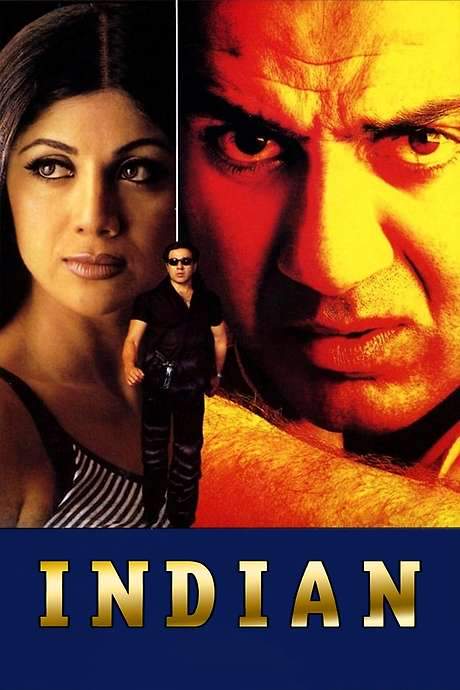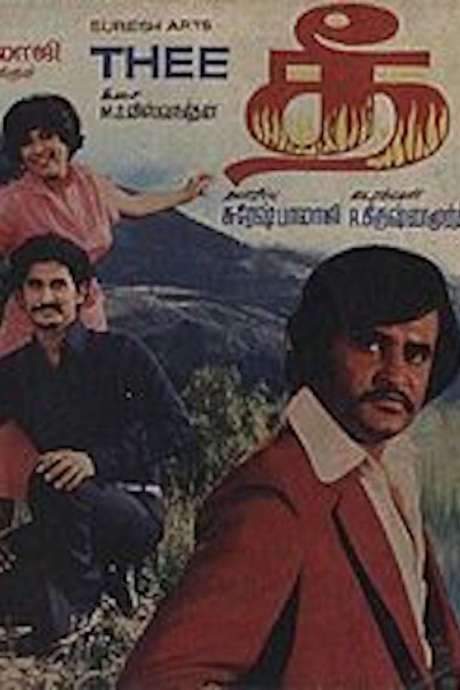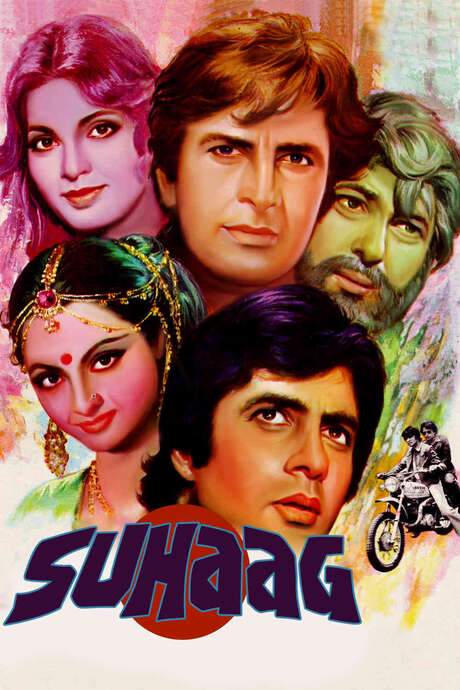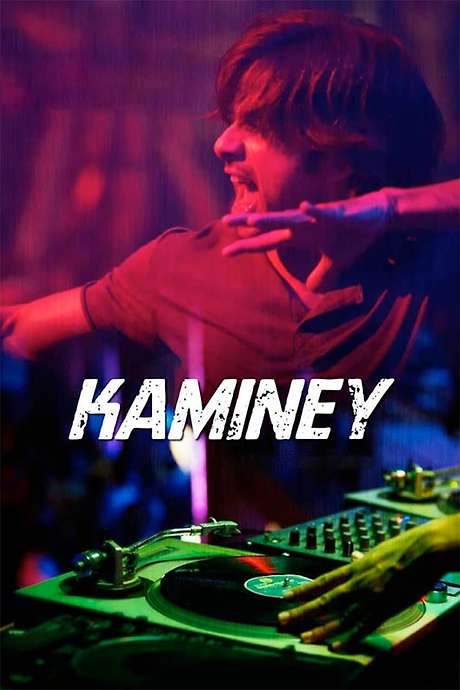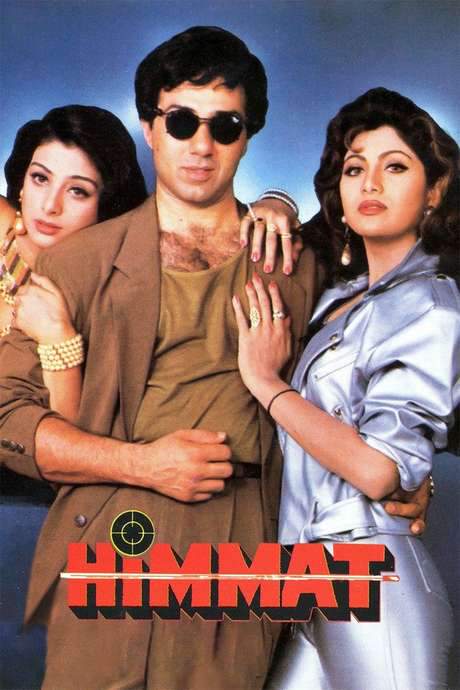
Hindustan Ki Kasam
Year: 1999
Runtime: 159 mins
Language: Hindi
Director: Veeru Devgan
A mother gives birth to twins who are separated at birth. One is raised in Pakistan as the devout Muslim Tauheed, while the other grows up in India as Hindu Ajay. Caught up in the enduring rivalry between the two nations, they end up on opposite sides, but a terrorist plot against the Pakistani Prime Minister forces the brothers to unite and save his life.
Warning: spoilers below!
Haven’t seen Hindustan Ki Kasam yet? This summary contains major spoilers. Bookmark the page, watch the movie, and come back for the full breakdown. If you're ready, scroll on and relive the story!
Hindustan Ki Kasam (1999) – Full Plot Summary & Ending Explained
Read the complete plot breakdown of Hindustan Ki Kasam (1999), including all key story events, major twists, and the ending explained in detail. Discover what really happened—and what it all means.
Two twins, Raju and Ajay, Ajay Devgn are born to an Indian Army officer who dies in war, leaving their family proud yet fractured. As the conflict with Pakistan rages on, the brothers are torn apart when the father’s victory celebration turns chaotic and the war comes to a close with their reunion impossible. One twin crosses the border into Pakistan and is raised as Tauheed, a life shaped by a terrorist who feeds him a story that his mother died in an Indian army attack. His eyes, a striking silver, mirror the distance between the land of his birth and the life he’s learned to endure. The other twin grows up as Ajay Malhotra, a Hindu, who channels his experiences and imagination into a vocation as a novelist, weaving his memories into fiction that feels almost prophetic.
The film opens with a sweeping montage that celebrates India’s vast diversity, its sacred spaces, and the Wagah border’s ceremonial fervor. A sweeping, hopeful song underscores the nation’s timeless identity, patriotism, and the scars of Partition, setting a broad stage for a story about connection, not just conflict. In the climactic parade of citizenship and identity, a boy runs with an Indian flag, only to be stopped by his father’s impatience and a stern, elder voice that rebukes the moment as shallow if it lacks duty. Kabira, Amitabh Bachchan with a missing arm and a grave sense of responsibility, scolds the crowd: it’s not enough to wave a banner; one must actively defend and love the country. His rallying cry, whispered for the young, becomes a creed: say “Jai Hind,” and show it through courage and service. The crowd repeats the phrase, their reverence clear, and they salute him, even as the shadow of further danger looms.
In the war council, India’s commanders plot to bring to light evidence of terrorism to the United Nations, aiming to condemn Pakistan for its sponsorship of attacks. A Pakistani pilot is forced into a deadly struggle by a hijacker who seizes a political moment to retrieve a vital disk, and a violent chase ends with the plane’s crash and a battle won in the air. Back home, Ajay’s life unfolds in parallel to these headlines: a photojournalist captures his image; a fan requests his autograph, and a fleeting moment of humility breaks through his public persona. His mother, a pillar of quiet dignity, receives a government pension, and his father’s stern dialogue about sacrifice and memory anchors their household. The mother’s life centers on simple acts of care, while Kabira’s lessons in patriotism resurface with each anecdote about Subhas Chandra Bose and other freedom fighters—reminders of a lineage that binds personal memory to national destiny.
Meanwhile, Ajay’s wayward romance with Priya, Sushmita Sen, becomes a public spectacle when she appears on television as a beauty queen, and Ajay’s daydreams of riding through traffic on a motorcycle give way to a real, tangible love. He and Priya connect in a moment of shared risk and exhilaration, and their bond quickly becomes the emotional compass of the story. The couple’s budding affection contrasts with the political churn around them: two Indian officers seize a copy of Ajay’s novel and present it as evidence of Major Chawla’s murder in New York, pushing the protagonist toward a fate he never anticipated.
As the plot thickens, Ajay and a photojournalist travel to Srinagar to document the conflict, while the army’s machinations reveal that the two Ajays—one in the Indian sphere and one reared across the border—share a deeper, almost telepathic bond. Pajirao Marathe’s film of a terrorist base becomes the catalyst for the revelation: the man named Pajirao is slain by a mysterious Ajay-lookalike, and the real Ajay finds himself entangled in a manufactured conspiracy designed to prove him a soldier when in fact his eyesight barred him from service. The truth, however, is more complicated: the mind behind the stories is drawing from real memories of a shared past.
In a pivotal sequence, Ajay is captured, interrogated, and subjected to hypnosis as the authorities seek to uncover the source of his plots. Dr. Dastoor, Kader Khan, explains a troubling connection: Ajay and Raju share a bond that makes the dreams of one reflect the other’s lived experiences. He begs to protect the truth from his mother, fearing how it might fracture the fragile peace they have built around their family. Ajay returns home with a murky mixture of fear and longing, and his mother reveals a painful memory—Aunt Geeta, the brother’s beloved, and the day a Pakistani raid took Raju away and took Geeta’s life. Kabira’s own testimony deepens the sense that the brothers’ fates are intertwined, a truth that cannot be easily separated by borders or politics.
As the nations’ rivalry intensifies, the brothers discover that the only path to peace lies in acting together rather than against one another. They must save the life of the Pakistan Prime Minister, who becomes a target of terrorists, a mission that compels them to join forces despite a history of enmity. The climactic sequence weaves together danger, sacrifice, and a revelation: the brothers’ loyalty to one another transcends the divides created by war. When a foe named Jabbar, Gulshan Grover and a conspirator in the scheme, is finally cornered, a brutal confrontation ends with Raju sacrificing himself to save his brother and the Pakistan Prime Minister.
In the immediate aftermath, Kabira delivers a resonant speech about how two brothers, divided by geography and politics, symbolize a larger tension that has long kept India and Pakistan apart. He questions why such bonds are severed and whether fate itself is in on the riddle of so much pain. The Indian and Pakistani leaders meet, extend hands in a new gesture of reconciliation, and a hopeful scene unfolds: the barricades that once separated the two peoples are removed, and ordinary citizens from both nations drift together, lighting candles in a quiet, shared vigil for peace. Roshanaara, Manisha Koirala, watches with a heart full of longing and relief as a thousand small signs of unity bloom around them, suggesting that healing is possible even after generations of suspicion.
Throughout, the film leans on a richly textured tapestry of memory and myth, balancing intimate drama with sweeping political stakes. The siblings’ bond reframes the idea of national identity as something lived and felt, not merely declared. The lovers’ romance survives the shockwaves of war and espionage, while the broader narrative pivots toward an inspiring, if bittersweet, reconciliation: the two nations, once divided by fear and propaganda, begin to see themselves in one another’s eyes again. The closing image lingers on the hopeful symbol of cross-border unity, with the two leaders’ handshake framed by the candlelit crowds and the unspoken, enduring truth that family—whether bound by blood or by shared humanity—remains the strongest bridge across any wall.
Last Updated: October 07, 2025 at 09:57
Unlock the Full Story of Hindustan Ki Kasam
Don't stop at just watching — explore Hindustan Ki Kasam in full detail. From the complete plot summary and scene-by-scene timeline to character breakdowns, thematic analysis, and a deep dive into the ending — every page helps you truly understand what Hindustan Ki Kasam is all about. Plus, discover what's next after the movie.
Hindustan Ki Kasam Timeline
Track the full timeline of Hindustan Ki Kasam with every major event arranged chronologically. Perfect for decoding non-linear storytelling, flashbacks, or parallel narratives with a clear scene-by-scene breakdown.

Characters, Settings & Themes in Hindustan Ki Kasam
Discover the characters, locations, and core themes that shape Hindustan Ki Kasam. Get insights into symbolic elements, setting significance, and deeper narrative meaning — ideal for thematic analysis and movie breakdowns.

Similar Movies to Hindustan Ki Kasam
Discover movies like Hindustan Ki Kasam that share similar genres, themes, and storytelling elements. Whether you’re drawn to the atmosphere, character arcs, or plot structure, these curated recommendations will help you explore more films you’ll love.
Explore More About Movie Hindustan Ki Kasam
Hindustan Ki Kasam (1999) Scene-by-Scene Movie Timeline
Hindustan Ki Kasam (1999) Movie Characters, Themes & Settings
Hindustan Ki Kasam (1999) Spoiler-Free Summary & Key Flow
Movies Like Hindustan Ki Kasam – Similar Titles You’ll Enjoy
Haider (2014) Full Summary & Key Details
Mission Kashmir (2000) Story Summary & Characters
Indian (2001) Full Movie Breakdown
Khadgam (2002) Detailed Story Recap
Katilon Ke Kaatil (1981) Movie Recap & Themes
Thee (1981) Film Overview & Timeline
Jaan Se Pyara (1992) Film Overview & Timeline
Suhaag (1979) Spoiler-Packed Plot Recap
Himalay Putra (1997) Full Movie Breakdown
Kaminey (2009) Movie Recap & Themes
Hare Ram (2008) Full Summary & Key Details
Indian (1996) Plot Summary & Ending Explained
Gadar 2 (2023) Film Overview & Timeline
Jai Hind (1994) Spoiler-Packed Plot Recap
Himmat (1996) Ending Explained & Film Insights





